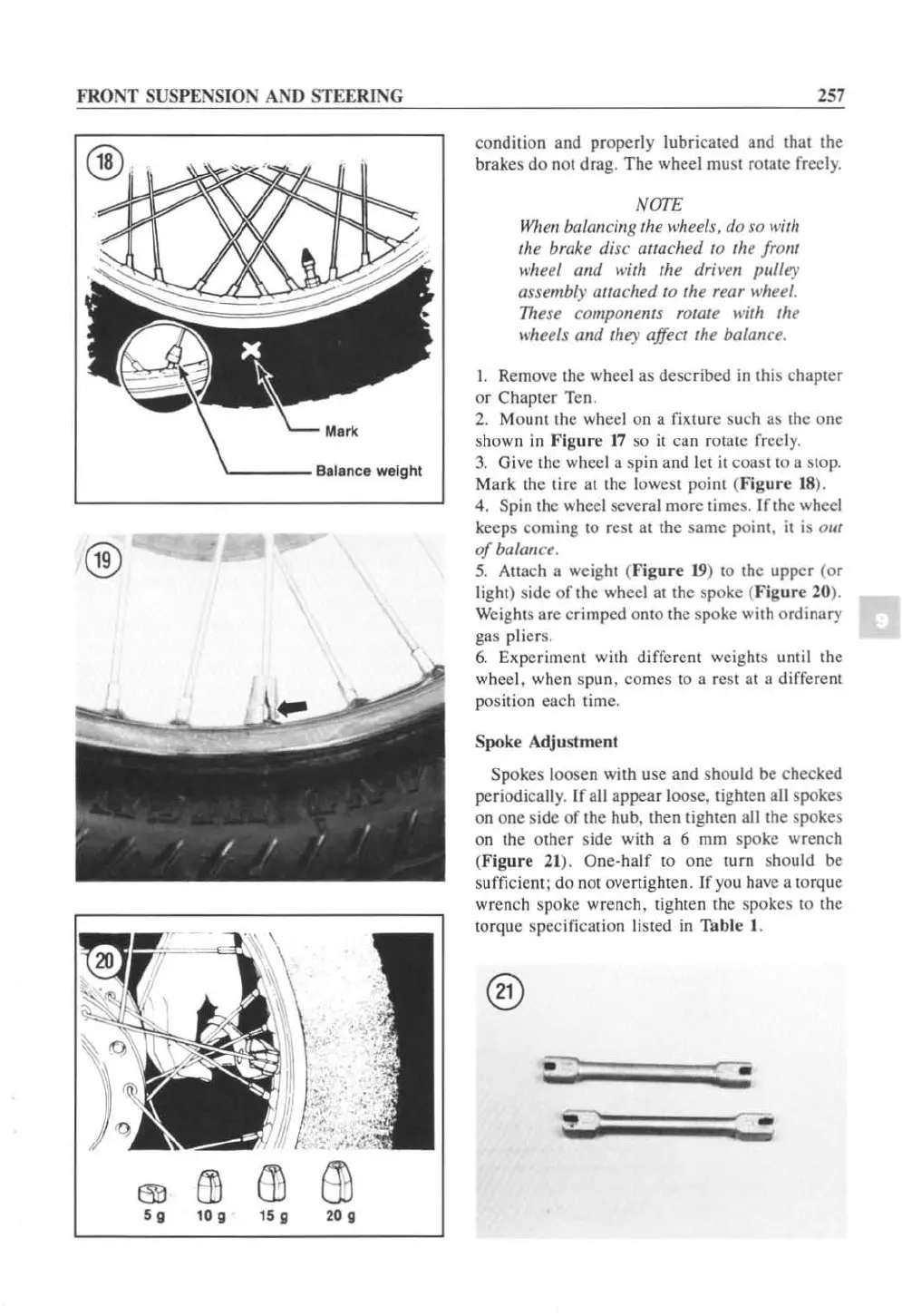FRONT SUSPENSION AND STEERI
NG
'-
___
Balance
weight
®
-"'
-.
':i>
-,
'
.,
~
''-'
5\l
ti')
ffi
tl
"
10,
'"
20,
257
co
nd
i
ti
on and properly
lu
bricated and that the
brakes do not drag. The wheel must rotate freely.
NOTE
Wh
en balancing the wheels, do so with
Ihe
brake disc attached to the
from
wheel and with the
dr;l
'e
n pulley
assembly attached to the rear wheel.
Theu
components rOlare with Ihe
wheels
and
th
ey
affect the
balana.
I. Remoye the wheel as described in this chapter
or
Chapler Ten.
2.
Mount the wheel
an
a fixtu re such as the one
shown
in
Figure
17
so it can rolale freely.
3.
Give the wheel a spin and lei
it
coast to a
SlO
p.
Mark the tire at the lowest point (
Figure
18
),
4. Spin the wheel several more time
s.
If
the wheel
keeps coming
to
rest at the sa
me
point.
it
is
011
1
of
balance.
5.
Attach a weight (
Figure
19
) to the upper (or
light) side
of
the wheel at the spoke (
Figure
20).
Weights are crimped onto the spoke with ordinary
gas plier
s.
6.
Experiment with different weights unt
il
the
wheel. when spun, comes to
a rest at a different
position each time.
Spoke Adjustment
Spokes loosen with use and should
be
checked
periodically. If a
ll
appear loose. tighten a
ll
spokes
on one side of the hub, then tighten all the spo
ke
s
on the other side with a 6
mm
spoke wrench
(
Figure
21
).
One·half
to one turn should
be
sufficient; do not overtighten. I f you have a torque
wrench spo
ke
wrench, tighten the spokes to the
torque specification listed in Table
I.
®
-

